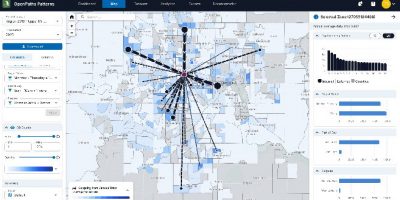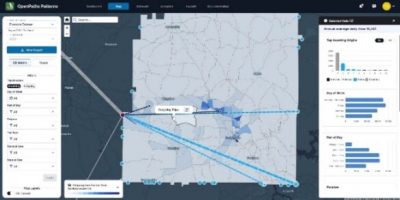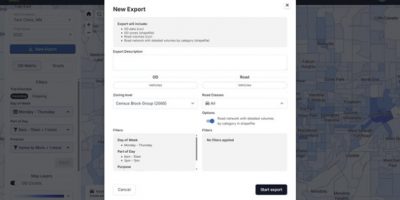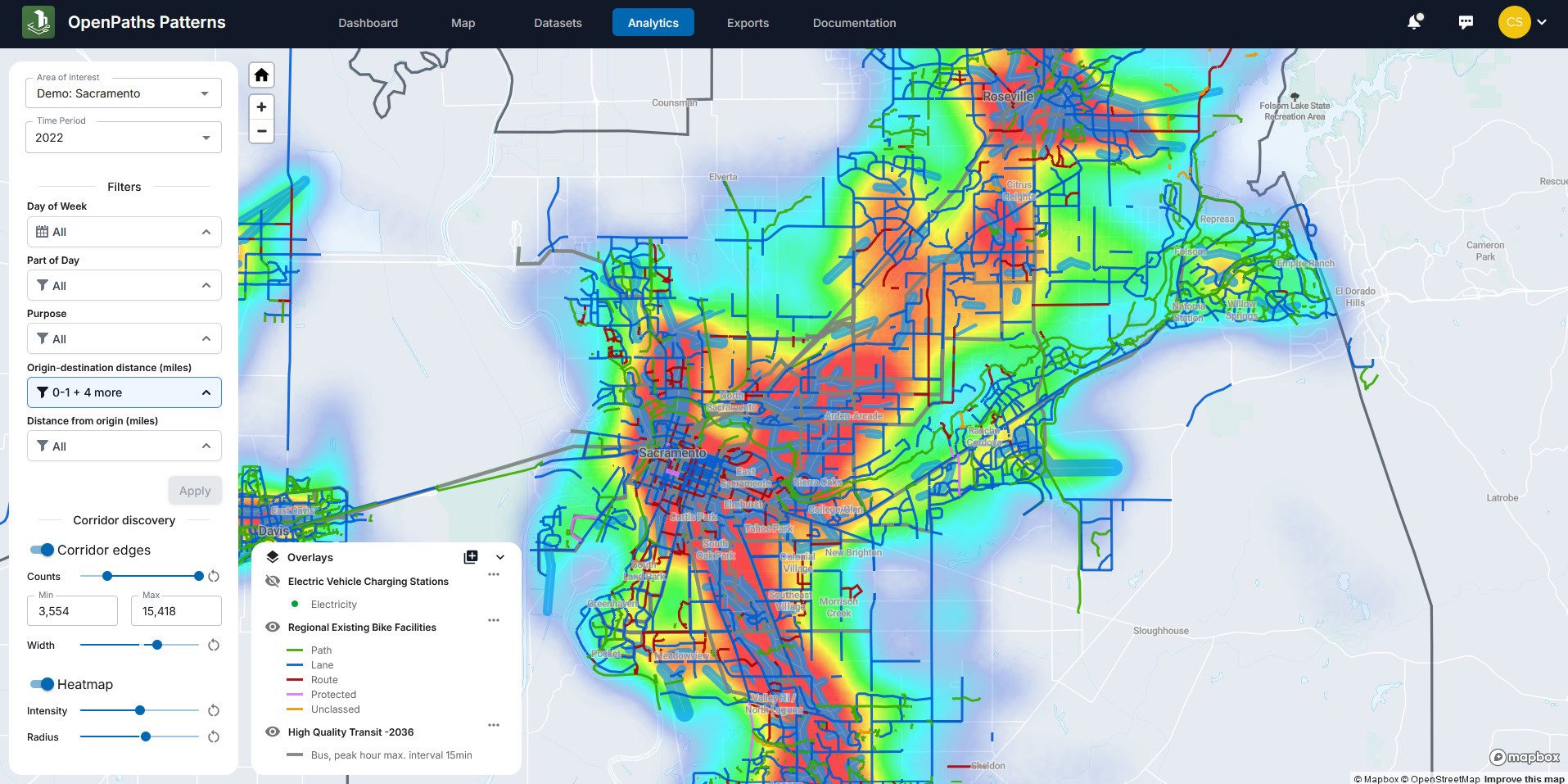OpenPaths Patterns
Mobility Data and Analytics
Request A Demo
Contact Sales
What is OpenPaths Patterns?
OpenPaths Patterns is a web-based mobility data and analytics application for transportation analysts to harness the power of big-data for better decision-making. With OpenPaths Patterns, you can mine travel mobility data to understand where, when, and how people travel anywhere in the United States.
OpenPaths Patterns makes transportation planning and traffic engineering analyses fast and efficient. It enables agencies to directly analyze and comprehend mobility data, while also facilitating data exports for further external analysis via travel demand models, traffic simulations, or other mobility analysis tools.
- Travel demand modeling and calibration
- Corridor studies
- Highway performance management
- VMT calculations
- Traffic simulation
- Traffic impact studies
- Tollway usage
- 2x
- 1.75x
- 1.5x
- 1.25x
- 1x, selected
- 0.75x
- 0.5x
- Chapters
- descriptions off, selected
- captions settings, opens captions settings dialog
- captions off, selected
This is a modal window.
Beginning of dialog window. Escape will cancel and close the window.
End of dialog window.
This is a modal window. This modal can be closed by pressing the Escape key or activating the close button.
This is a modal window. This modal can be closed by pressing the Escape key or activating the close button.
OpenPaths Patterns
Key Features
- Access maps and data from any web browser
- Run analytics such as select-link and corridor analysis
- Generate subarea data extracts
- Import custom zone systems
- Identify and export data
Key Features

Interactive Maps
Inspect and filter origin-destination travel flows and traffic volumes across multiple dimensions, such as trip purpose, time of day, and day type.

Datasets

Advanced Analytics
Compute mobility analytics to answer the most common transportation and traffic engineering questions including select-link and select-zone analysis, corridor discovery and road VMT statistics.

Easy Exports
Save data for local use in standard text and GIS formats using easy-to-use export tools.

Improved Transparency
Ensure confidence and context for your decision-making with clear data quality reports, including the most common goodness of fit statistics for your region.

OpenPaths Patterns provides intuitive access to nationwide movement data in the form of current and historic traffic volumes, origin/destination data, and trips by purpose and day of week and time of day.
- Data-driven: Detailed insights into traffic patterns on the fly, supporting evidence-based decision-making for transportation planning, infrastructure investment, and policy development.
- Time- and location-based: Data visualization and analysis tools enable planners to gain a comprehensive look into how and where people are traveling. Access to movement data throughout and across regions and for specific time periods allows planners to quickly isolate, understand, and quantify infrastructure demand.
- Enhanced efficiency: Provides instant access to data, avoids costly data collection and processing, and delivers readily consumable data to analysts, travel modelers, and GIS practitioners.
How OpenPaths Patterns Works

User Quote
FAQs
No! OpenPaths Patterns runs in your web browser with a growing set of native mobility analytics tools, and provides exportable data which can be ingested into other modeling or analysis frameworks.
OpenPaths Patterns provides origin-destination (O-D) movements, traffic volumes, and travel routes throughout the United States, as well as tools to query and filter the data to understand daily travel patterns. Data is available for 2019, 2022, and 2023, with planned ongoing data releases.
- Validate existing models using OpenPaths Patterns traffic volumes
- Use OpenPaths Patterns O-D data as base-year traffic demand matrices
- Assign base-year O-D traffic demand
- Calibrate models using O-D traffic demand and volumes**
- Use O-D traffic demand matrices for matrix adjustment/estimation (ODME) procedures
